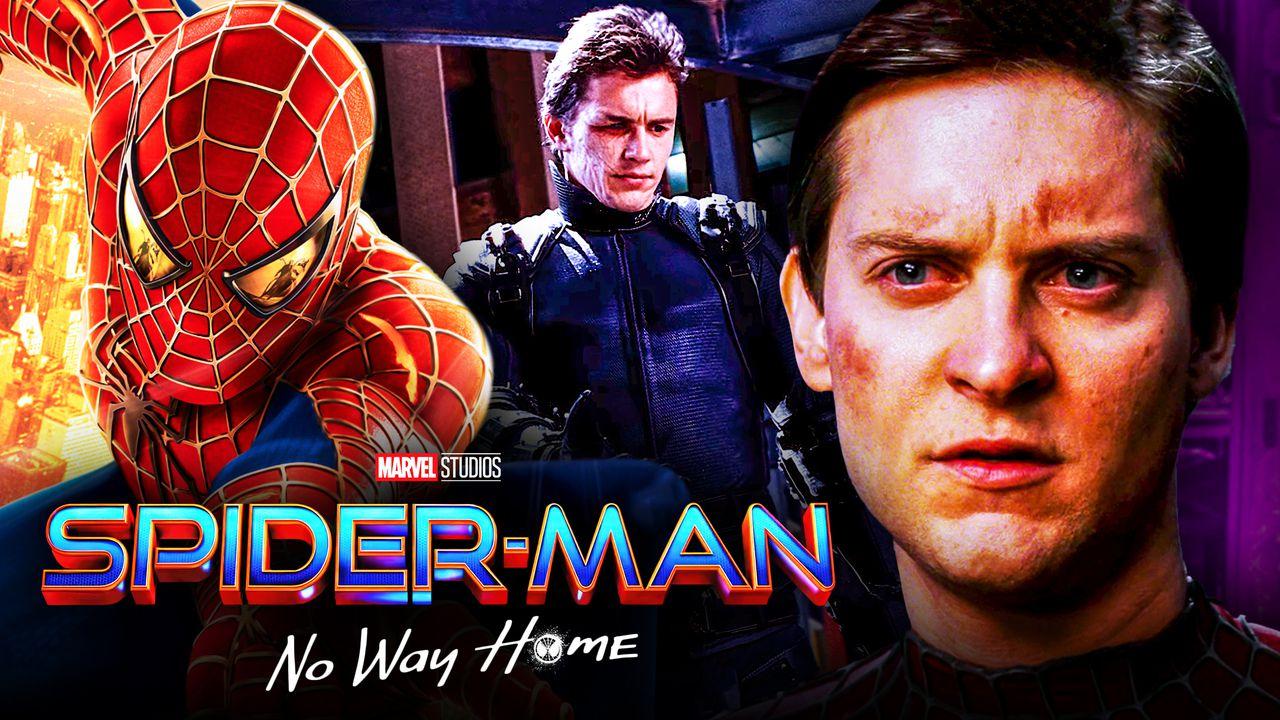
While Tobey Maguire and Andrew Garfield's Peter Parkers don't call Tom Holland's world their home, Spider-Man: No Way Home gave the past generations of web-slingers a comfortable Marvel Cinematic Universe-style AirBnB during their Multiversal travels. Their MCU stay was short-lived, but it did leave an immeasurable impact as it integrated the original five live-action Spider-Man films into Marvel Studios canon from a Multiversal standpoint.
Many speculated that even with the original actors returning, these iterations of Peter Parker would be Variants bearing familiar faces, not unlike JK Simmons's second run as J. Jonah Jameson. Through recounts of their past battles with Venom and Rhino, however, it was clear that these Spider-Men were the same from Sam Raimi's trilogy and Marc Webb's franchise.
That said, not every story the Spideys of yesteryear shared was completely accurate. In particular, Tobey Maguire's Peter Parker dropped two informative tidbits that didn't quite add up.
Misinformation In Spider-Man: No Way Home?

Hank Pym always said you can never trust a Stark, and the Osborns may think the same about a Parker.
Spider-Man: No Way Home featured two lines of Tobey Maguire dialogue that fans have said don't completely align with on-screen events from his Spider-Man trilogy. This begins with his questionable anxiousness to cure Willem Dafoe's Norman Osborn, who has been dead for nearly two decades in his world.
"I think I can make an anti-serum for Dr. Osborn. I've been thinking about it a long time."
His second piece of allegedly misleading information comes in an exchange with Jacob Batalon's Ned Leeds.
"So, do you have a best friend too?" Ned asks.
"I did," Tobey's Peter admits. "He died in my arms, after he tried to kill me. It's heartbreaking."
Tobey's Omitted Info About the Osborns

Despite what online chatter says, neither of Tobey's questionable lines are technically lies.
Even with Norman Osborn long gone in his universe, Tobey could have spent time between 2002's Spider-Man and 2007's Spider-Man 3 hypothesizing a cure in fear of the goblin disease resurfacing in James Franco's Harry. There is precedence for this, as Andrew Garfield's The Amazing Spider-Man 2 revealed retroviral hypodysplasia (the goblin disease) was indeed a genetic sickness within the Osborn family.
If the goblin disease was in the Osborn genes, Franco's Harry died before he could show the effects. As Tobey alludes to, his best friend's last breaths came in his arms "after he tried to kill [him]." While Harry did die after he tried to kill Peter in one of Spider-Man 3's opening scenes, a lot happened between them. He got amnesia, rekindled his friendships, ended his best friend's relationship, something about strawberries, and ultimately joined forces with Spider-Man in the threequel's final battle.
That said, Harry died saving Peter Parker's life. Why tarnish his best friend's legacy by not acknowledging how he died a hero?
Similar to how The Dark Knight sees Commissioner Gordon forced to vilify Batman and uphold Harvey Dent's heroic reputation, despite the latter threatening to kill his children, the Osborns may be a sore subject in the Sam Raimi universe. Both Norman and Harry were buried as heroes, but the truth about their antagonistic tendencies may have surfaced in the years after Spider-Man 3.
As a close friend of a criminal family, Tobey's Peter may have had to publicly downplay his relationships with the Osborns in the subsequent years, and this line to Ned is just his muscle memory kicking in. That, or it was a fun way for the writers to allude to Ned's Hobgoblin future.
Spider-Man: No Way Home is in theaters now.
MCU Writer, Editor, Podcaster












